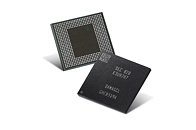- Joined
- Oct 9, 2007
- Messages
- 47,417 (7.51/day)
- Location
- Hyderabad, India
| System Name | RBMK-1000 |
|---|---|
| Processor | AMD Ryzen 7 5700G |
| Motherboard | ASUS ROG Strix B450-E Gaming |
| Cooling | DeepCool Gammax L240 V2 |
| Memory | 2x 8GB G.Skill Sniper X |
| Video Card(s) | Palit GeForce RTX 2080 SUPER GameRock |
| Storage | Western Digital Black NVMe 512GB |
| Display(s) | BenQ 1440p 60 Hz 27-inch |
| Case | Corsair Carbide 100R |
| Audio Device(s) | ASUS SupremeFX S1220A |
| Power Supply | Cooler Master MWE Gold 650W |
| Mouse | ASUS ROG Strix Impact |
| Keyboard | Gamdias Hermes E2 |
| Software | Windows 11 Pro |
Samsung Electronics Q1-2019 preliminary reads like a horror story to investors, as the company posted its worst drop in operating-profit in over four years. Operating income fell 60 percent in the quarter ending March 2019, to about USD $5.5 billion, beating Bloomberg analysts who had predicted a 56 percent drop. Sluggish sales to IoT major Amazon, smartphone major Apple, and other handset makers, compounded by swelling inventory in the supply chain, has triggered sharp drops in DRAM prices that were offsetting critically low NAND flash prices. Demand for Samsung SoCs (application processors) is also on the decline.
Samsung is betting heavily on the success of its Galaxy S10 family of smartphones to recover from losses faced in the three component markets. Prices of DRAM prices fell 22 percent YoY, and NAND flash continues to slide by roughly that much, at 23 percent. NAND flash prices have been on a continuous decline over the past 3 years. DRAM prices, on the other hand, rallied in that period, and it's only now that it posted its first price-drop since 2016. NAND flash prices are expected to slide further down, as oversupply and failure of newer technologies like QLC taking off, hurt NAND flash manufacturers.

View at TechPowerUp Main Site
Samsung is betting heavily on the success of its Galaxy S10 family of smartphones to recover from losses faced in the three component markets. Prices of DRAM prices fell 22 percent YoY, and NAND flash continues to slide by roughly that much, at 23 percent. NAND flash prices have been on a continuous decline over the past 3 years. DRAM prices, on the other hand, rallied in that period, and it's only now that it posted its first price-drop since 2016. NAND flash prices are expected to slide further down, as oversupply and failure of newer technologies like QLC taking off, hurt NAND flash manufacturers.

View at TechPowerUp Main Site



 Let's have a celebration
Let's have a celebration